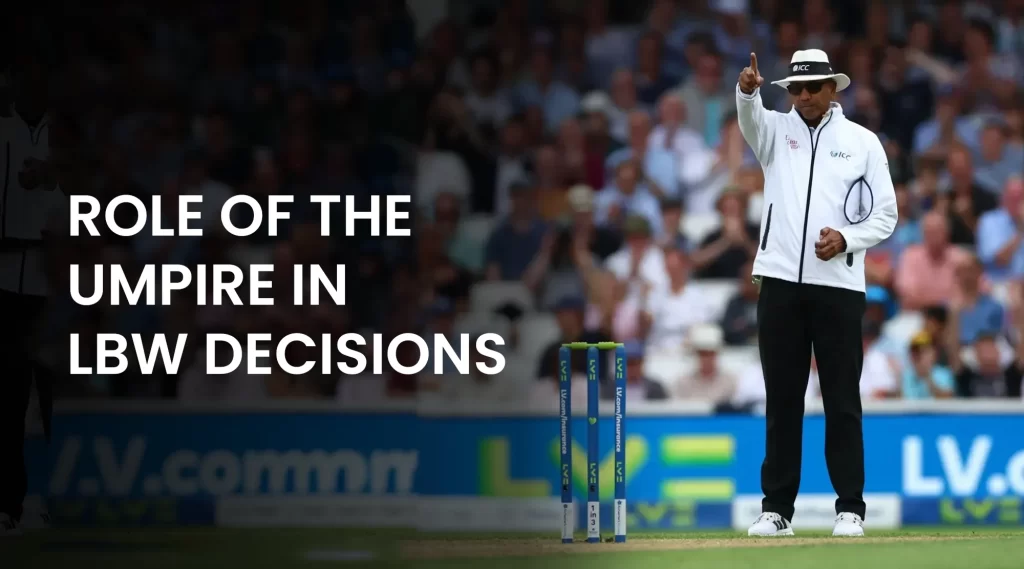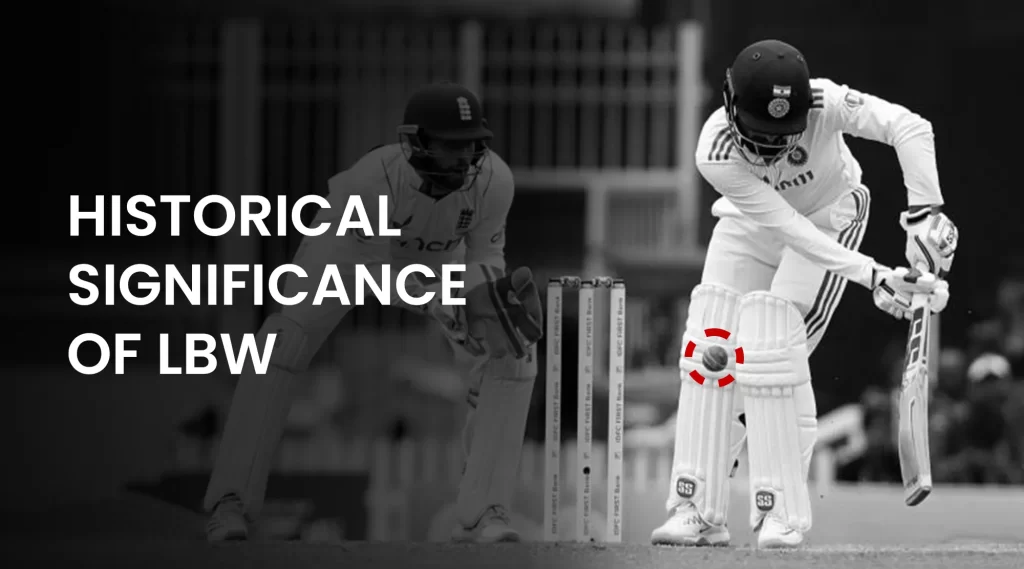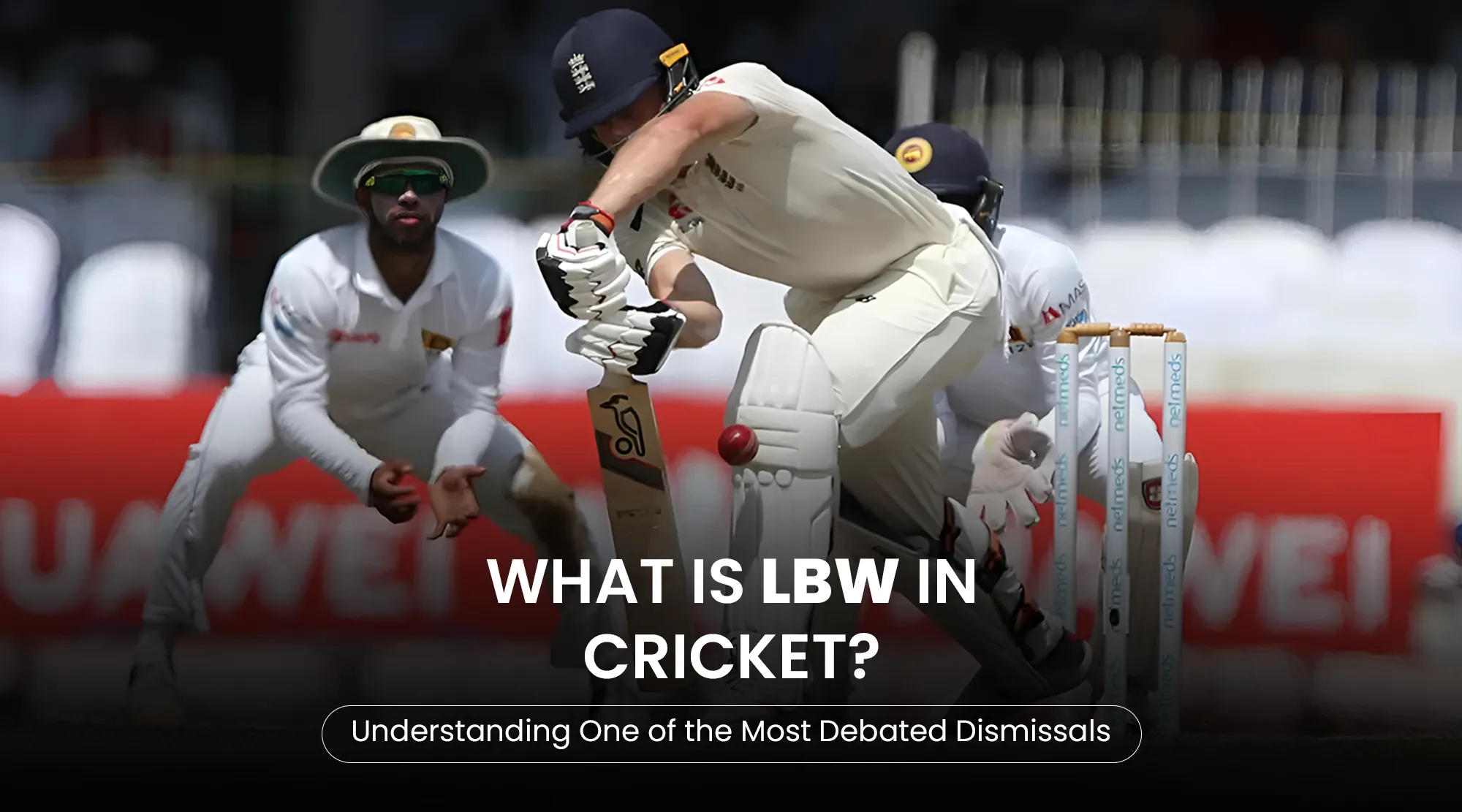What is LBW in Cricket?
Are you looking for a simple explanation of “what is LBW in cricket”? Why does it often stir debates even among experts? Most of you have watched a cricket match and seen a player walk off the field after an umpire dramatically raised their finger; chances are you’ve witnessed an LBW decision. Here in this article, we will break down the detailed explanation of the LBW rule, how it works, and why it often stirs debate even among experts.
What Does LBW Mean?
LBW refers to Leg Before Wicket. Basically, this is a method where the batter is out if the ball hits their leg, or any part of their body, before hitting the bat. This rule helps batters from unfairly using their body to block the ball that could otherwise dismiss them.
The Basic Conditions for an LBW Dismissal
The rules require that a batsman be regarded as LBW under various conditions:
- The ball must pitch in line with the stumps or on the off side (not outside leg stump).
- The ball must strike any part of the batter’s body before hitting the bat.
- The point of impact must be in line with the stumps (unless no shot is offered).
- The ball must be going on to hit the stumps.
The above-mentioned aspects make the MBW rule highly dependent, which is what it’s most reviewed decision in Cricket.
Role of the Umpire in LBW Decisions

The umpire’s Decision is fundamental to the LBW dismissal. There are so many aspects to the decision, like pitch, impact, shot offered, and angle, that it is really hard to get this live LBW call correct. With the invention of technology like Hawk-Eye and DRS, players and fans can challenge the local umpire’s decision with visual predictions showing the ball’s path.
Why is LBW Controversial?
The LBW rule is one of the most controversial in Cricket. Small differences in where the ball strikes or pitches the batsman can lead to various outcomes. When key players are involved, fans often disagree with the LBW rule. There is little to no margin for error, and interpretation plays a pivotal role in giving it the status of a perpetual fixture of discussion.
Historical Significance of LBW

Since the 18th century, the LBW rule has existed. The rule was originally created to stop batters from unfairly blocking the ball. However, today, it plays a major role in many matches like Test Cricket and T20, where a wicket can change the game’s momentum.
LBW in Modern Cricket
In modern cricket, LBW decisions have been on the rise, owing to fast bowlers’ aggression and the spin bowlers targeting the stumps. Nowadays, batsmen are required to be careful in footwork and picking their shots against world-class bowlers in pressure games.
Conclusion
So, what is LBW in cricket? This is one of the most technical, misunderstood, and game-changing rules in the sport. It promotes fairness and encourages batters to use their bats rather than their legs in defending the wickets. It is always nice to know the basic understanding of rules in any game-one would be a rookie fan of cricket or a hardcore fan-who understands the rules in detail. Well, the ins and outs of the LBW rule could lead to a better appreciation of the entire game in itself.
To know more about Cricket, click here.
FAQs
What is the LBW rule in cricket?
A batter is declared “Leg Before Wicket” aka “LBW” when the ball strikes their body before hitting the stumps.
What is the LBW method?
LBW is in charge. To put it simply, if a batsman blocks a ball that was headed for the stumps with any part of their body other than their hands, they are out LBW.
What is the new rule for LBW?
When all of the conditions listed in 36.1. 1 to 36.1. 5 are met, the striker is out LBW.
Who is a no-ball?
“No Ball” was first used to indicate that a bowler had overstepped the bowling crease and had to try to bowl a fair ball again.
What is the DRS rule in IPL?
The Indian Premier League (IPL) has added challenges for height-based no-balls and wide balls outside the off-stump to the Decision Review System (DRS).
